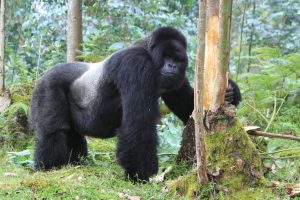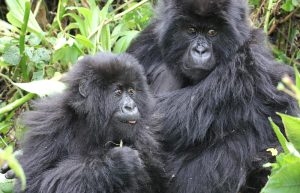How to plan for your Uganda Safari
Planning a Uganda safari requires careful preparation to ensure you maximize your experience in this beautiful country known for its wildlife, diverse landscapes, and rich cultural heritage. Whether you’re aiming to see mountain gorillas, explore national parks, or experience the vibrant birdlife, here’s a step-by-step guide to help you plan your Uganda safari: How to plan for your Uganda Safari
1. Choose the Best Time to Visit
Uganda can be visited year-round, but the best times for a safari depend on what you want to see and do.
- Best time for Gorilla Trekking: The dry seasons, from June to August and December to February, are ideal. These months offer easier trekking conditions with less rainfall.
- Best time for General Wildlife Viewing: Wildlife safaris in parks like Queen Elizabeth, Murchison Falls, and Kidepo Valley are best from June to September when animals gather near water sources.
- Birdwatching: The peak season for birding is from November to April, when migratory species arrive. Resident birds are present year-round, but they’re easier to spot during the dry seasons.
2. Decide on the Key Activities
Uganda is famous for its diverse safari experiences. Here are some key activities to consider:
- Gorilla Trekking: Uganda is one of the few countries where you can see mountain gorillas in the wild. Bwindi Impenetrable National Park and Mgahinga Gorilla National Park are the two locations for gorilla trekking. You’ll need to secure a permit in advance ( $800 per person).
- Chimpanzee Tracking: Visit Kibale National Park, Budongo Forest, or Kyambura Gorge to see chimpanzees in their natural habitat.
- Game Drives: Explore Uganda’s savannah parks like Queen Elizabeth National Park, Murchison Falls, and Kidepo Valley for traditional wildlife safaris with opportunities to see elephants, lions, leopards, giraffes, and more.
- Birdwatching: Uganda has over 1,000 bird species, making it a top destination for birding enthusiasts. Consider places like Bwindi, Mabamba Swamp, and Queen Elizabeth National Park for a rich variety of species.
- Boat Safaris: Take boat cruises in Murchison Falls National Park (on the Nile River) and Queen Elizabeth National Park (Kazinga Channel) to view hippos, crocodiles, and a variety of birdlife up close.
- Cultural Encounters: Learn about the local cultures through visits to the Batwa pygmy communities, cultural performances, or craft markets.
3. Choose Your Destinations
Depending on your interests, you can create a customized itinerary based on these top destinations:
- Bwindi Impenetrable National Park: For gorilla trekking and birdwatching.
- Queen Elizabeth National Park: Known for the tree-climbing lions, birding, and boat safaris.
- Murchison Falls National Park: Uganda’s largest national park, great for wildlife viewing, boat safaris, and viewing the powerful Murchison Falls.
- Kibale National Park: Best for chimpanzee tracking and primate watching.
- Lake Mburo National Park: Known for its savannah landscape, wildlife like zebras, and walking safaris.
- Kidepo Valley National Park: Remote and less-visited but offers stunning landscapes and great wildlife viewing, especially for African buffalo herds and predators.
- Semuliki National Park: Great for birdwatching and visiting hot springs.
4. Get the Necessary Permits
- Gorilla Permits: Gorilla trekking is regulated, and permits must be secured in advance due to limited availability. Each permit costs $800 per person (as of 2024). It’s important to book at least 3 to 6 months ahead, especially during peak seasons.
- Chimpanzee Tracking Permits: Prices vary depending on the park. Kibale National Park permits are about $250 per person, while other parks like Budongo might have lower fees.
- Park Entrance Fees: Each national park has entrance fees ranging from $35 to $40 per day for foreign visitors. Some parks, like Lake Mburo, also offer walking safari permits.
5. Plan Your Safari Logistics
Safari Duration: Most safaris in Uganda last between 7 to 12 days, depending on the destinations and activities. A sample itinerary might include:
- 3 days in Bwindi for gorilla trekking
- 2-3 days in Queen Elizabeth National Park for wildlife safaris and a boat cruise
- 2-3 days in Murchison Falls for game drives and the Nile boat safari
- 1-2 days in Kibale for chimpanzee trekking
Safari Costs: Costs vary depending on your accommodation, transportation, and activities. On average:
- Budget: $250 – $350 per day per person.
- Mid-range: $400 – $600 per day per person.
- Luxury: $700 – $1,500+ per day per person.
Transportation: You’ll need to choose between flying and driving.
- By Road: Most safari circuits are accessible by 4×4 vehicles. Road trips give you flexibility and a chance to see more of the countryside.
- By Air: Domestic flights are available to parks like Bwindi, Queen Elizabeth, and Kidepo. Flying can save time, especially when traveling to remote areas like Kidepo.
6. Select Accommodations
Uganda offers a range of accommodations, from luxury lodges to budget-friendly options.
- Luxury Lodges: High-end lodges provide top-notch comfort, often with great locations near national parks (e.g., Sanctuary Gorilla Forest Camp in Bwindi).
- Mid-range Lodges: Comfortable lodges with good amenities (e.g., Engagi Lodge in Bwindi, Mweya Safari Lodge in Queen Elizabeth).
- Budget Lodges and Camps: Basic accommodations with fewer amenities but still close to nature (e.g., Buhoma Community Rest Camp in Bwindi, Red Chilli Rest Camp in Murchison Falls).
7. Health and Safety Considerations
- Vaccinations: Uganda requires proof of a yellow fever vaccination for entry. Additionally, vaccinations for hepatitis A, typhoid, and tetanus are recommended.
- Malaria Prevention: Uganda is a malaria-risk area, so consult your doctor about taking anti-malarial medication, and use insect repellent and mosquito nets.
- Travel Insurance: Make sure to get comprehensive travel insurance that covers medical evacuation, especially if you’re planning to visit remote areas.
8. Prepare Visas and Travel Documents
- Visa: Most nationalities require a visa to enter Uganda. You can apply for an e-visa online or obtain one on arrival at the airport. A single-entry visa costs around $50.
- East Africa Tourist Visa: If you’re planning to visit Rwanda and Kenya in addition to Uganda, consider getting the East Africa Tourist Visa ($100), which allows multiple entries within the three countries.
9. Pack for Your Safari
- Clothing: Light, breathable clothing in neutral colors (khaki, beige, olive green) for safaris. Long-sleeved shirts and pants for protection from the sun and insects. Rain gear and warm layers for early morning treks and cool nights, especially in mountainous areas.
- Footwear: Comfortable hiking boots or shoes for gorilla and chimpanzee trekking. Sturdy sandals for relaxing at the lodge.
- Essentials: Binoculars, camera with extra batteries, sunscreen, insect repellent, hat, sunglasses, and a reusable water bottle.
10. Work with a Tour Operator
While it’s possible to plan a self-drive safari, working with a reputable Ugandan tour operator is highly recommended, especially for gorilla trekking and visits to remote areas like Kidepo Valley. Tour operators can help with logistics, securing permits, guides, accommodation, and transport, ensuring a seamless experience.
Sample Itinerary (10 Days):
- Day 1: Arrival in Entebbe, transfer to hotel.
- Day 2: Drive to Bwindi Impenetrable National Park.
- Day 3: Gorilla trekking in Bwindi.
- Day 4: Transfer to Queen Elizabeth National Park, boat safari on Kazinga Channel.
- Day 5: Early morning game drive, Leopards and transfer to Kibale National Park.
- Day 6: Chimpanzee trekking and cultural experience.
- Day 7: Transfer to Murchison Falls National Park.
- Day 8: Game drive and boat safari to Murchison Falls.
- Day 9: Visit Ziwa Rhino Sanctuary.
- Day 10: Return to Entebbe for departure.
By following these steps, you can ensure a well-planned and memorable Uganda safari, packed with thrilling wildlife encounters and unforgettable experiences. How to plan for your Uganda Safari



